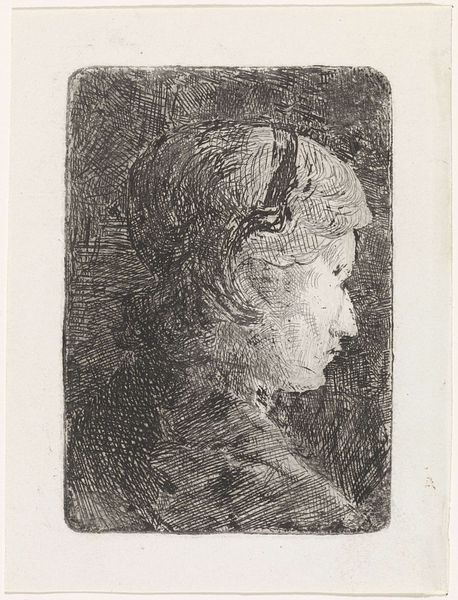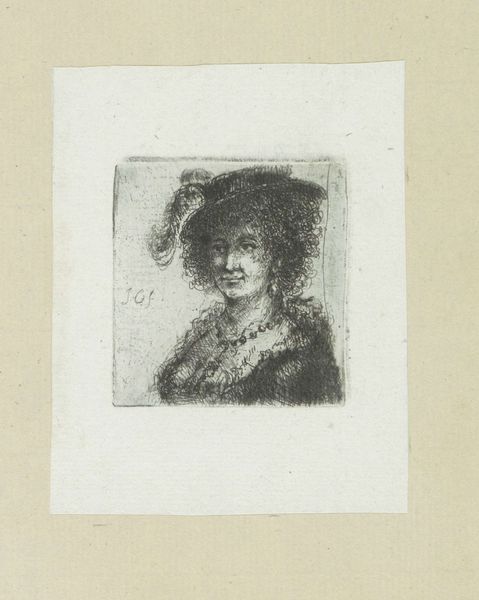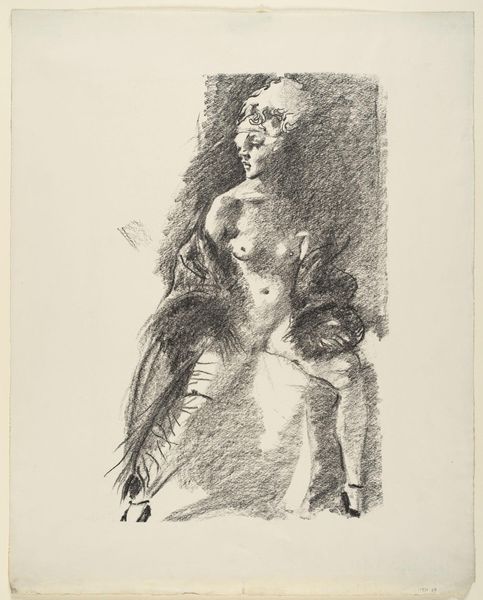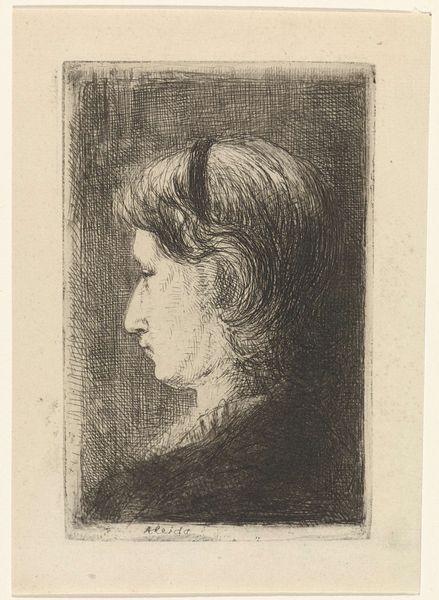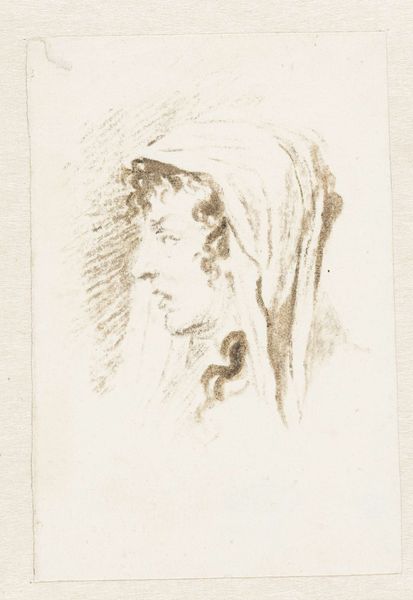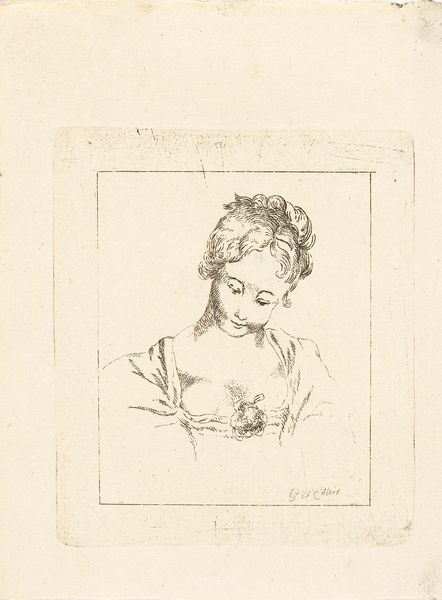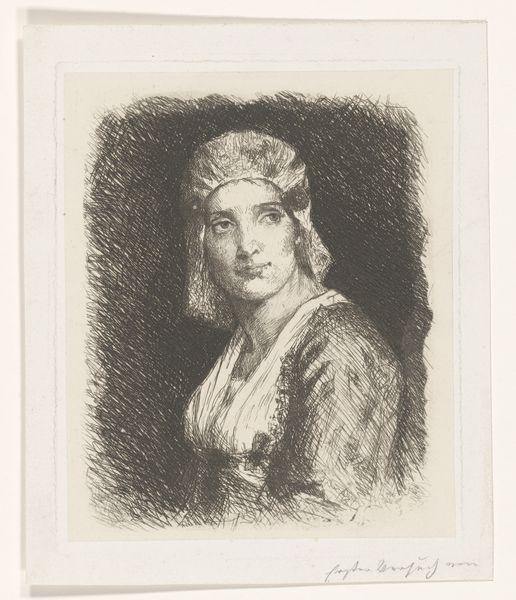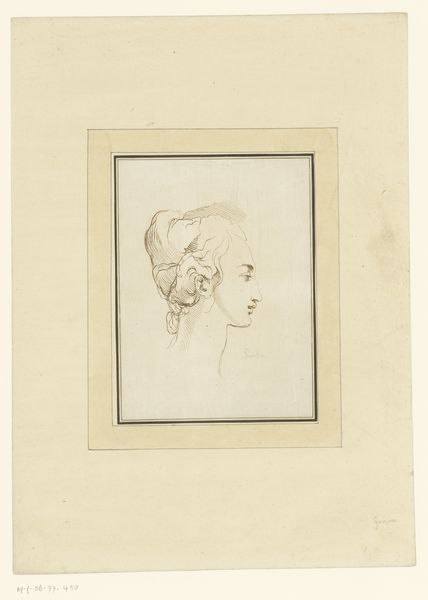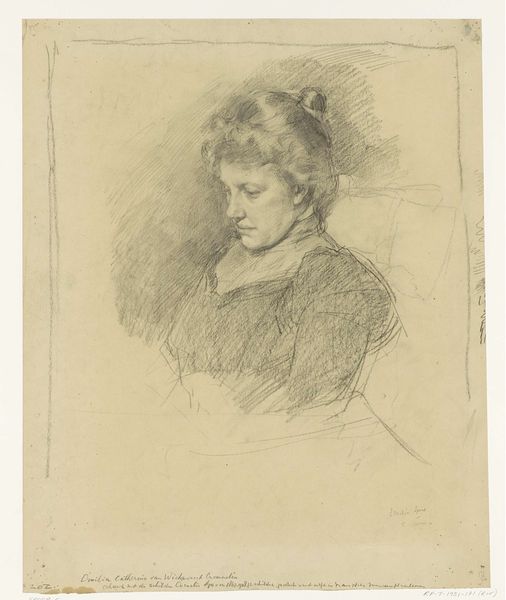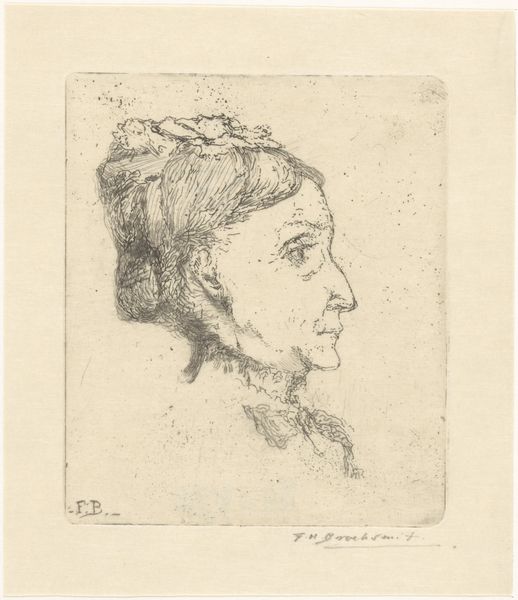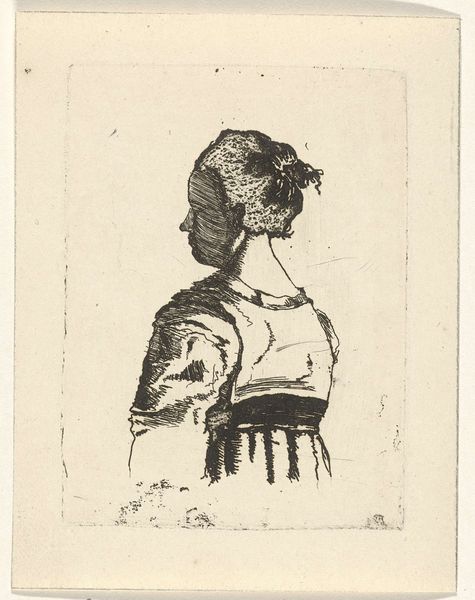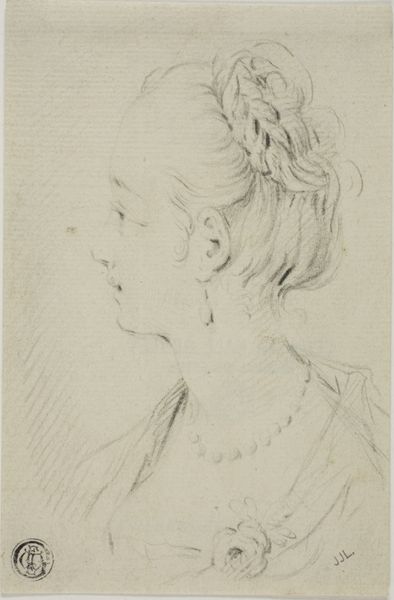
drawing, graphite, charcoal
#
portrait
#
drawing
#
german-expressionism
#
figuration
#
expressionism
#
graphite
#
charcoal
Copyright: Public Domain: Artvee
Editor: This is Lovis Corinth's "Portrait of the Margravine von Bayreuth," created in 1922 using graphite and charcoal. It’s striking, almost confrontational, despite the subject's traditional garb. How do you interpret this work through the lens of its time and Corinth's artistic approach? Curator: It's crucial to situate this work within the Weimar Republic and the rise of German Expressionism. Corinth, though initially associated with Impressionism, became deeply influenced by the anxieties and social upheavals of the era. This portrait, while seemingly traditional, challenges conventional portraiture. Do you notice how the stark lines and almost brutal application of charcoal distort the Margravine's features? Editor: Yes, there’s a tension between the subject's aristocratic identity and the artist’s almost violent portrayal of her. It’s not a flattering representation, even though it's clearly someone of high status. Curator: Exactly. It is that distortion, the rejection of idealization, which is politically charged. Corinth seems to be dismantling the very notion of inherited privilege. Consider how Expressionism, as a broader movement, served as a voice for those marginalized by the traditional power structures. Do you think this portrait could be viewed as a commentary on the crumbling foundations of the aristocracy in post-war Germany? Editor: That's a really interesting point. Seeing it as less about the individual and more about the declining power of the aristocracy shifts the whole perspective. I was initially just thinking about the expressionistic style. Curator: Precisely! And by understanding the historical and cultural context, we see the work operates on multiple levels, inviting dialogue around social power, artistic representation, and the artist's role in reflecting or challenging the status quo. It urges us to challenge what’s at stake, whose narrative is at stake, and ultimately whose representation matters. Editor: That connection between the artistic style and the socio-political commentary is eye-opening. It really reframes how I see the power of art to comment on the world around it.
Comments
No comments
Be the first to comment and join the conversation on the ultimate creative platform.
